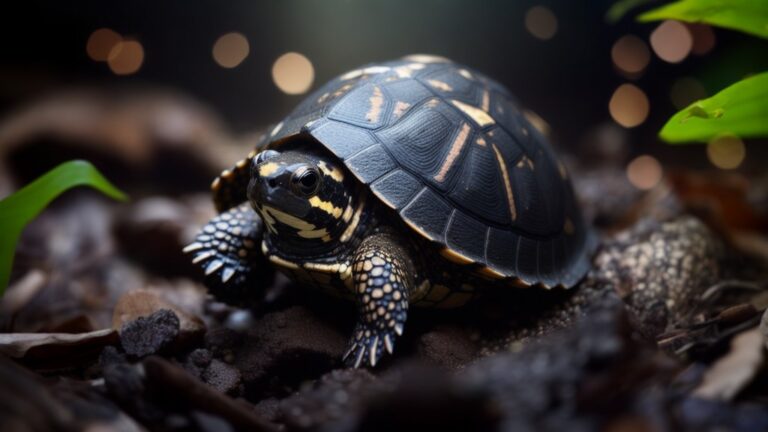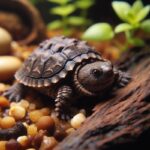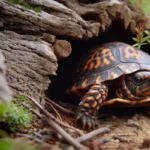As a turtle enthusiast, you’ve likely come across the Razor-backed Musk Turtle (Sternotherus carinatus), a captivating species with unique features that set it apart from other turtles.
In this article, we’ll delve into 21 amazing facts about their appearance, habitat, and care requirements that will leave you in awe of these remarkable reptiles.
Unique Shell Shape
A prominent feature of these turtles is their distinct shell shape.
The carapace (top shell) has a pronounced keel running down the center, giving it a sharp, razor-like appearance.
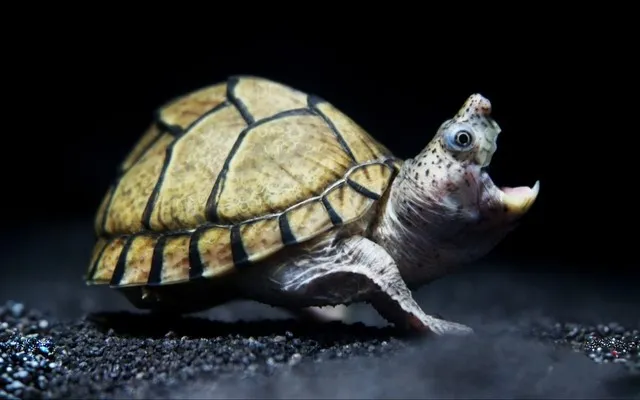
This keel is more pronounced in juveniles and tends to flatten out as the turtle matures.
The plastron (bottom shell) is relatively small and offers little protection, making these turtles more vulnerable to predators.
Small Size, Big Attitude: Razor-backed Musk Turtles’ Personality
These turtles are among the smaller species, typically measuring between 3 to 5 inches in length.
Though small in size, they have a feisty and aggressive nature.
They may become territorial and display aggressive behaviors such as biting and lunging when threatened or provoked.
It’s essential to handle these turtles with care and give them plenty of space to avoid injury.
Excellent Climbers
You might be surprised to learn that this species of turtle are skilled climbers.
In the wild, they can often be found basking on logs and rocks that are partially submerged in water.
With their sharp claws, they grip surfaces and easily climb steep inclines.
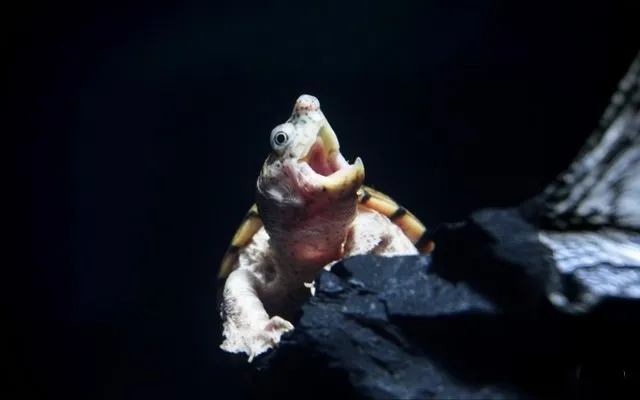
In captivity, providing a basking platform with a ramp or easy access will help mimic their natural environment and keep them happy and healthy.
Preference for Slow-Moving Water: Habitat and Distribution
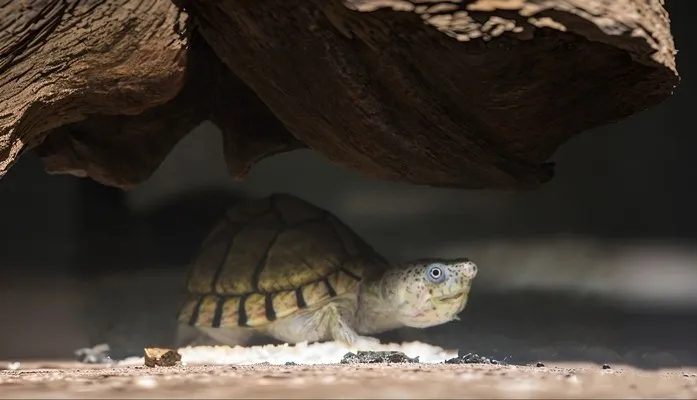
Native to the United States, this species can be found primarily in Texas, Louisiana, and Arkansas.
They prefer slow-moving bodies of water, such as swamps, marshes, ponds, and creeks.
As bottom-dwellers, they often hide among aquatic vegetation, submerged logs, and rocks.
Diet: Mainly Invertebrates

Razor-backed Musk Turtles are omnivores, but their diet primarily consists of invertebrates such as:
- Insects
- Snails
- Crayfish
- Worms
They will also occasionally consume small fish and aquatic plants.
In captivity, a well-balanced diet is essential for their health.
Providing a mix of commercial turtle pellets, live or frozen invertebrates, and occasional vegetables will ensure they receive proper nutrition.
Mating and Reproduction
Mating usually takes place during spring and fall.
Females lay one to six eggs per clutch in a shallow nest dug near the water’s edge.
Incubation lasts approximately 70 to 100 days, with hatchlings emerging between August and October.
Long Lifespan of Sternotherus carinatus
With proper care, these turtles can live for 20 years or more in captivity.
Providing a clean, spacious habitat, a balanced diet, and regular veterinary check-ups will help ensure your turtle thrives and lives a long, healthy life.
They Are Skilled Swimmers but Require Shallow Water
While these turtles are skilled swimmers, they prefer shallow water due to their small size and reduced plastron.
In captivity, it’s essential to provide a water depth of 6 to 12 inches, allowing them to easily reach the surface to breathe.
Additionally, including hiding spots and resting areas will help mimic their natural habitat and reduce stress.
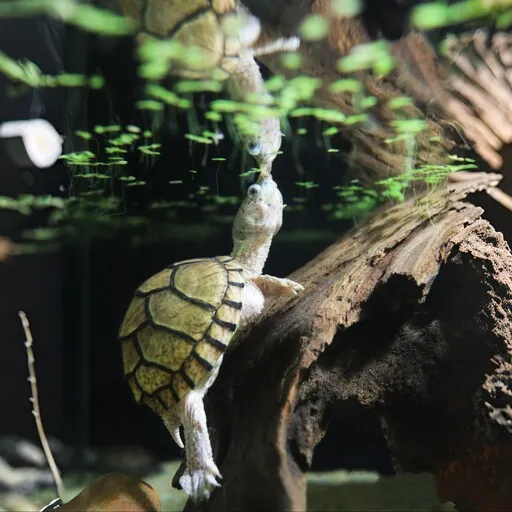
Emitting a Foul Odor
Like other musk turtle species, these turtles have the ability to emit a foul-smelling musk when threatened or stressed.
This defense mechanism helps deter predators and buy the turtle time to escape.
In captivity, minimizing stress and handling these turtles with care will help prevent the release of this unpleasant odor.
Protected Species in Some States
Due to habitat loss and collection for the pet trade, these turtles are considered a protected species in some states.
It’s essential to research local regulations and obtain any necessary permits before acquiring one as a pet.
Nocturnal Creatures
These turtles are primarily nocturnal, meaning they are most active during the night.
In the wild, they spends their days hiding in aquatic vegetation and submerged logs, emerging at night to forage for food.
In captivity, it’s essential to provide ample hiding spots and maintain a consistent day-night cycle to mimic their natural environment and promote their well-being.
Hibernation During Cold Months
In the wild, these turtles may hibernate during the cold winter months, burying themselves in the mud at the bottom of their aquatic habitat.
However, this is not a requirement for their survival, and turtles kept in captivity under controlled conditions do not need to hibernate.
If you live in a region with cold winters, it’s crucial to provide a consistent temperature within their enclosure to ensure their health and comfort.
Importance of Proper Lighting
Like all reptiles, Razor-backed Musk Turtles require proper lighting to maintain their health.
In particular, they need exposure to UVB light, which helps them synthesize vitamin D3 and properly metabolize calcium.
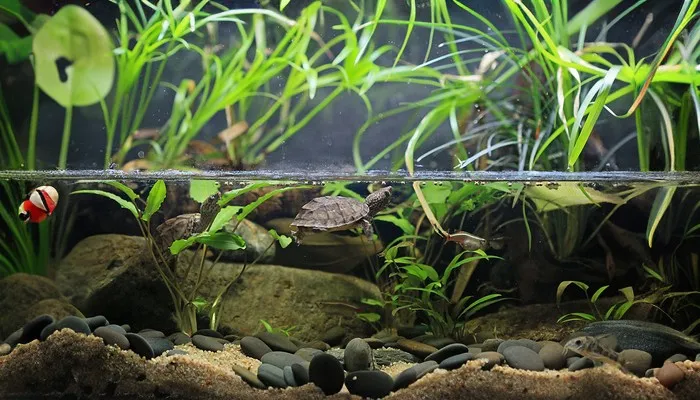
In captivity, it’s crucial to provide a UVB light source and replace the bulbs regularly, as their effectiveness decreases over time.
The UVB light should be placed at a distance of 10 to 12 inches (25 to 30 cm) from the basking area to ensure proper exposure.
Specific Temperature Range Requirements
This species thrives in a specific temperature range, which is essential to maintain in captivity.
The ideal water temperature for these turtles is between 75 and 80 degrees Fahrenheit (24 to 27 degrees Celsius).
The basking area should be slightly warmer, with a temperature between 85 and 90 degrees Fahrenheit (29 to 32 degrees Celsius).
Using a submersible water heater and a heat lamp will help maintain the appropriate temperatures within their enclosure.
Compatibility with Other Turtles
While Razor-backed Musk Turtles can be territorial and aggressive, they can be kept with other turtles of similar size and temperament, provided that the enclosure is large enough to accommodate multiple inhabitants.
It’s essential to monitor their interactions closely and provide plenty of hiding spots and basking areas to minimize competition and aggression.
The Crucial Role of Regular Water Changes
Due to their preference for slow-moving water, Razor-backed Musk Turtles can be sensitive to poor water quality.
In captivity, it’s crucial to perform regular water changes and maintain proper filtration to keep the water clean and prevent the buildup of harmful bacteria and waste.
Investing in a high-quality filter and performing partial water changes every week will help ensure a healthy environment for your turtle.
Unique Vocalizations
These turtles have been known to emit unique vocalizations, particularly during mating season.
They may produce low-frequency grunts and squeaks, which can be an interesting aspect of their behavior to observe.
While these vocalizations are not as common in captivity, providing a suitable environment and ensuring proper care may increase the likelihood of witnessing this intriguing behavior.
Enrichment Activities for Well-being
Like all animals, Razor-backed Musk Turtles can benefit from enrichment activities that stimulate their natural instincts and behaviors.
In captivity, you can provide enrichment by:
- Offering a variety of hiding spots and climbing structures, such as PVC pipes, caves, and artificial plants.
- Providing live or frozen food items, like insects and worms, that encourage foraging and hunting behaviors.
- Introducing new items to explore, such as floating plants, rocks, or driftwood, and regularly changing the layout of their enclosure to maintain their interest and mental stimulation.
These enrichment activities can help keep the turtles engaged, mentally stimulated, and to promote their overall well-being.
Prone to Certain Health Issues
These turtles, like all reptiles, can be susceptible to specific health issues.
Frequent health issues include respiratory infections, deterioration of the shell, and lack of essential vitamins.
Providing proper care, including a clean environment, balanced diet, and appropriate lighting, can help prevent many of these issues.
Regular veterinary check-ups can also help detect and address any health concerns early.
Exhibiting Sexual Dimorphism
Sexual dimorphism pertains to the distinct differences in appearance between male and female members of the same species.
In Razor-backed Musk Turtles, males and females exhibit subtle differences in their physical characteristics.
Males tend to be slightly larger than females and have longer, thicker tails.
Additionally, the male’s cloacal opening is located farther from the base of the tail compared to females.
Understanding these differences can help you determine the sex of your turtle and provide the appropriate care based on their specific needs.
Not Ideal for First-Time Turtle Keepers
Due to their specific care requirements and aggressive nature, Razor-backed Musk Turtles may not be the best choice for first-time turtle keepers.
However, if you have experience with turtles and are prepared to provide the proper care and attention these unique reptiles require, they can make a rewarding and fascinating addition to your collection.
Conclusion
Overall, the Razor-backed Musk Turtle is a truly amazing reptile, boasting a multitude of intriguing features and behaviors.
You can guarantee these unusual turtles a happy and healthy existence by learning all about their particular requirements and giving them the attention they require.
Whether you’re an experienced turtle keeper or simply captivated by these incredible creatures, these captivating reptiles promise to offer endless fascination and enjoyment.
